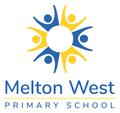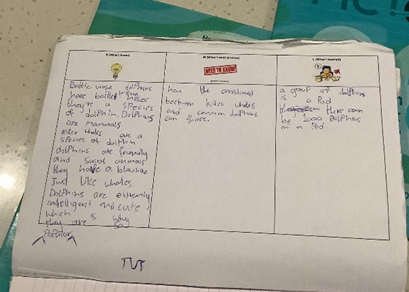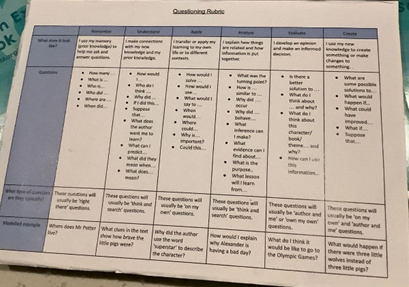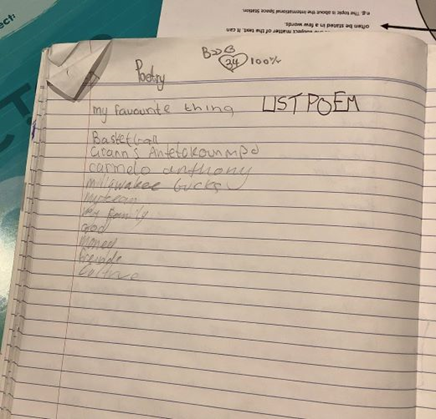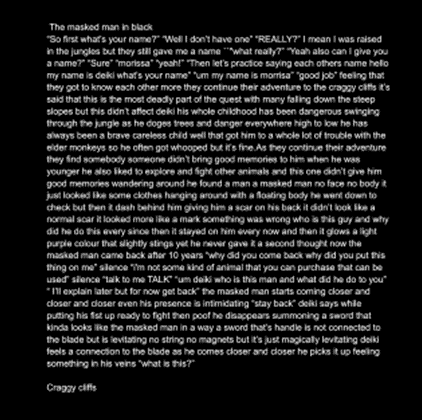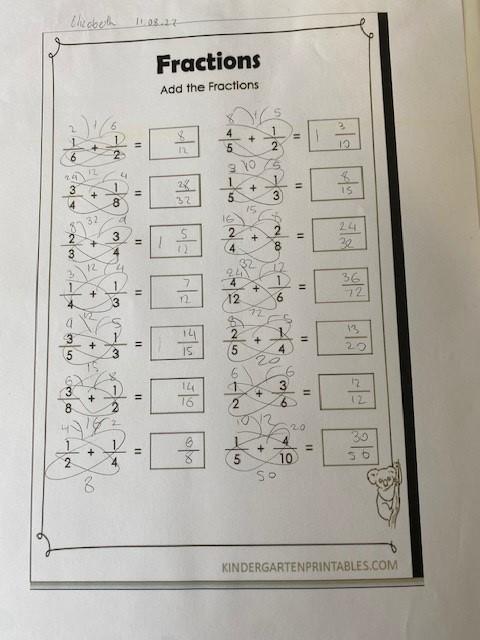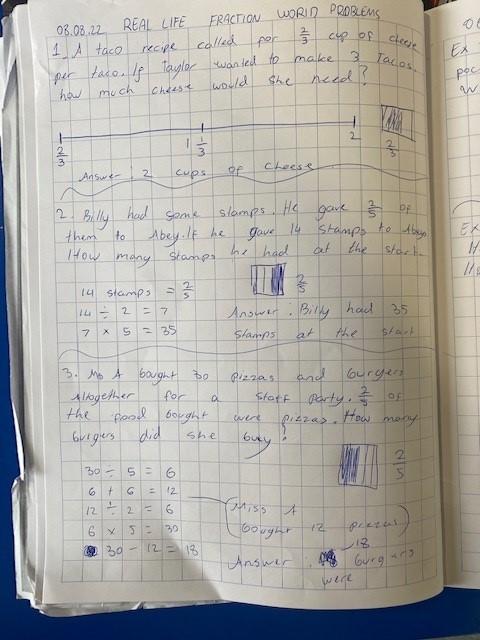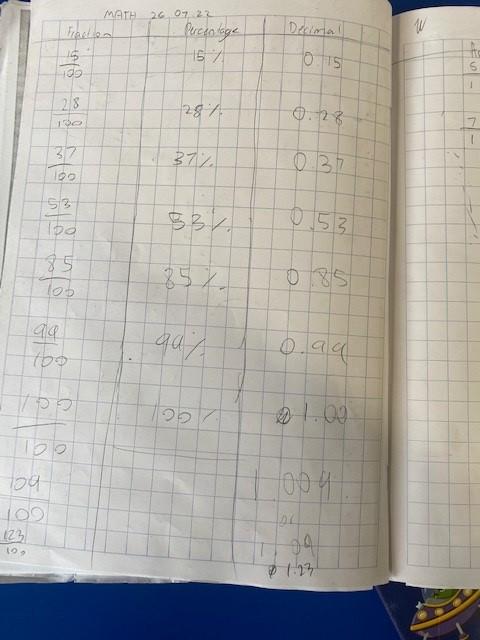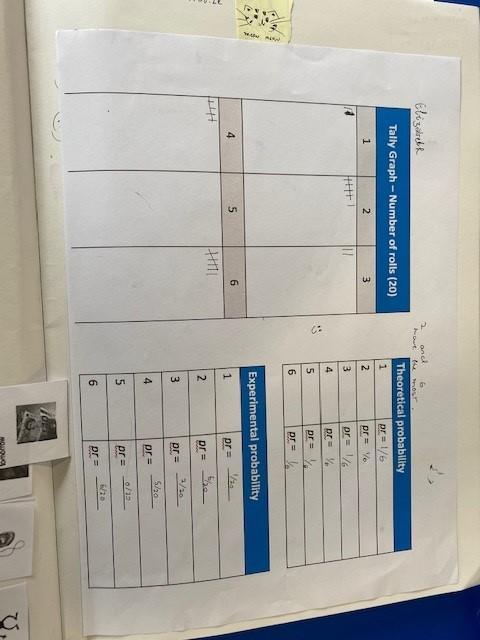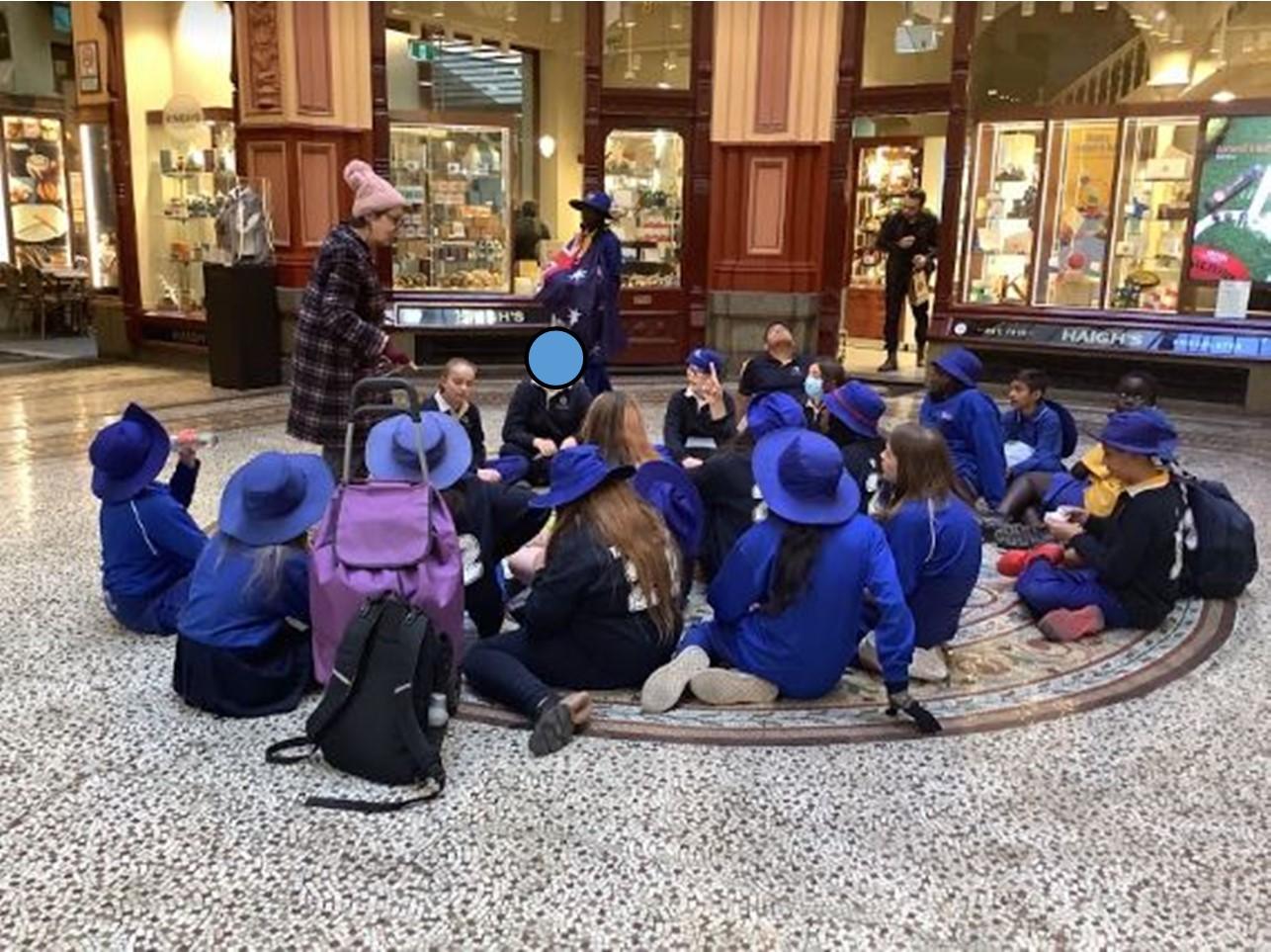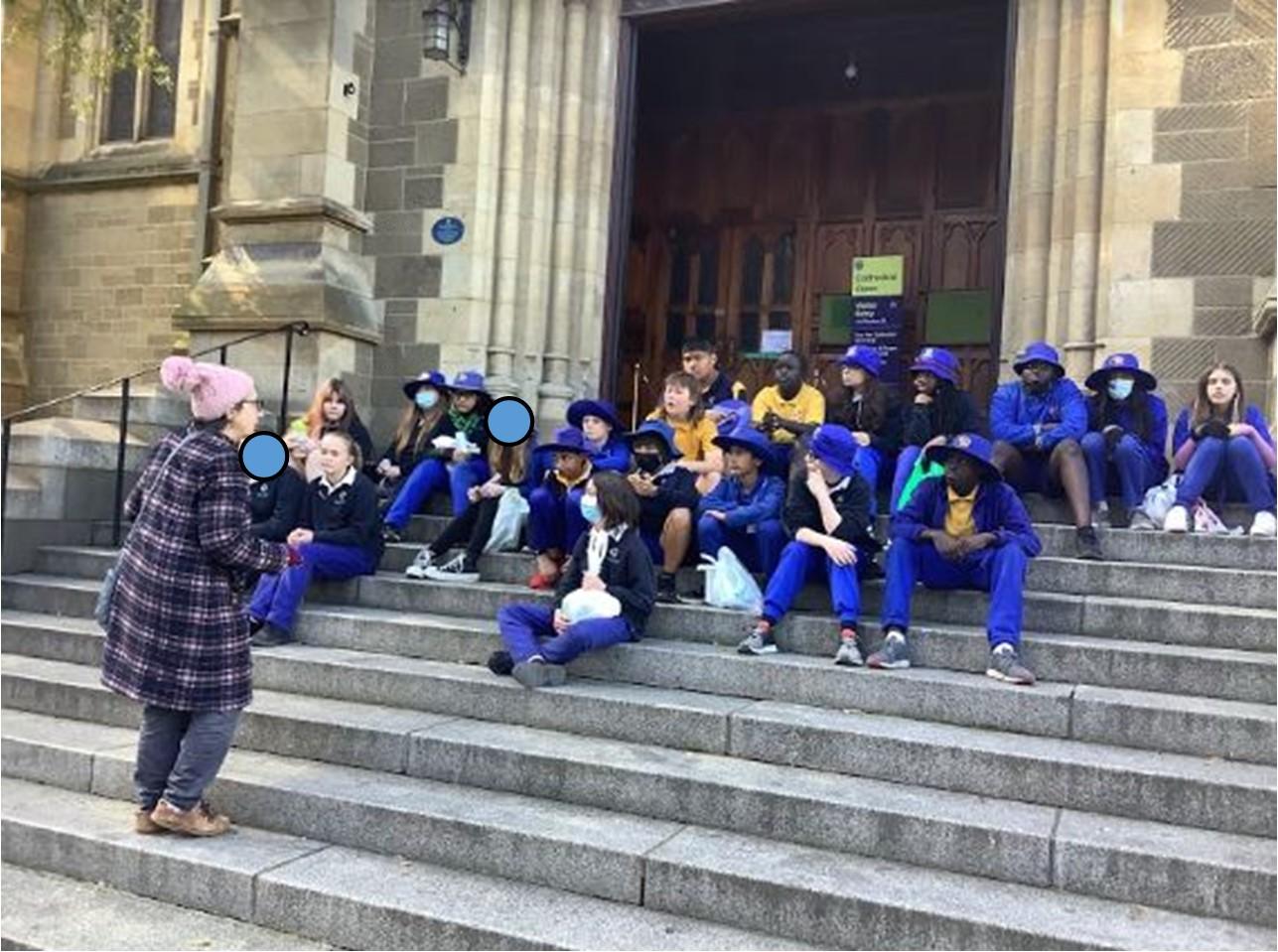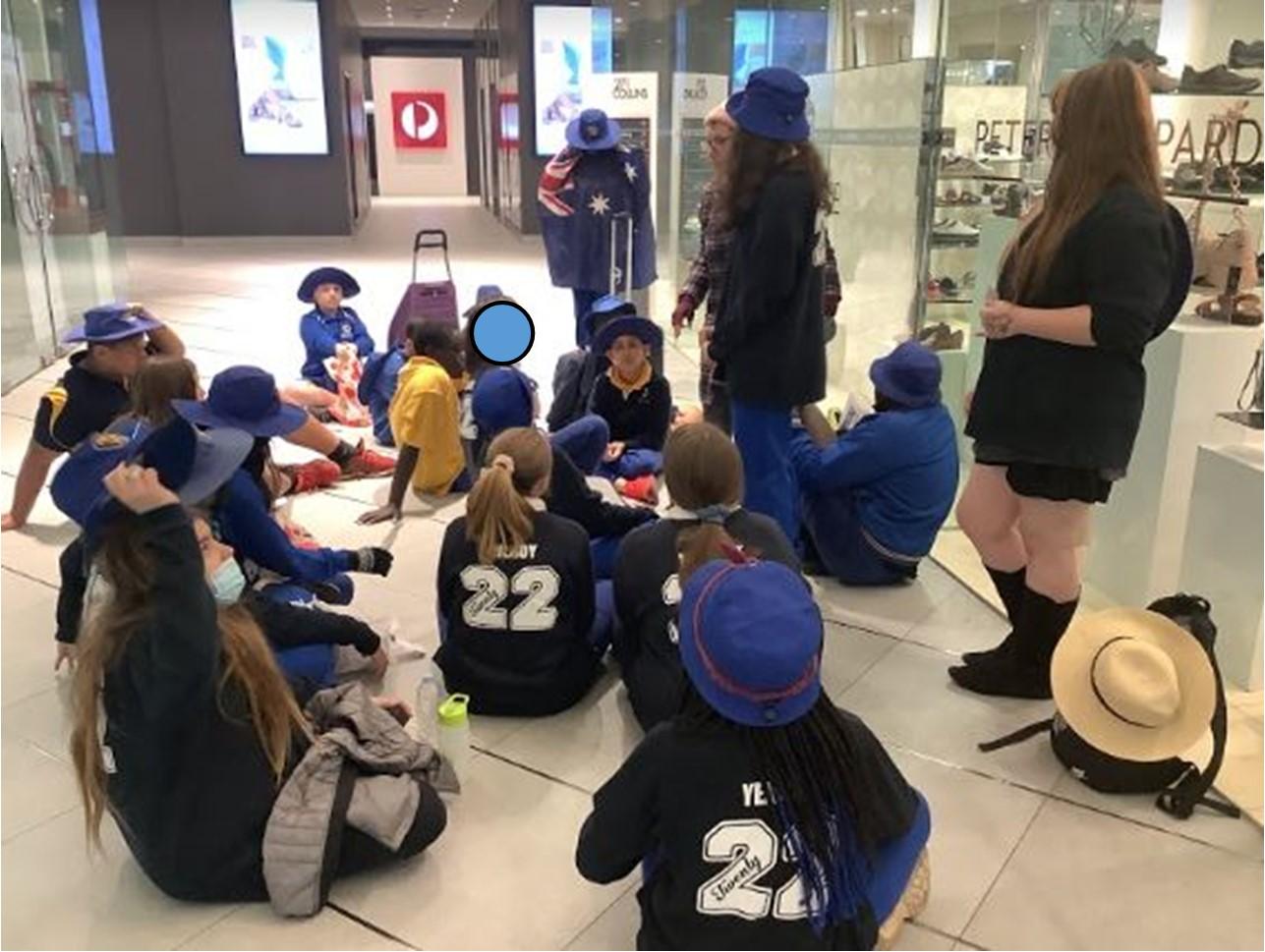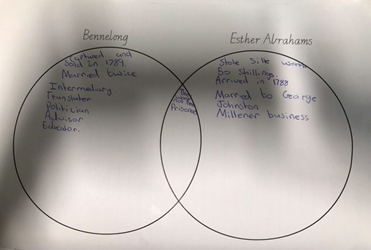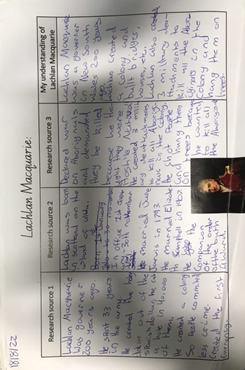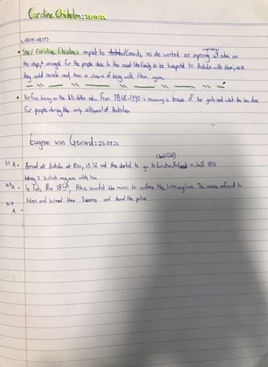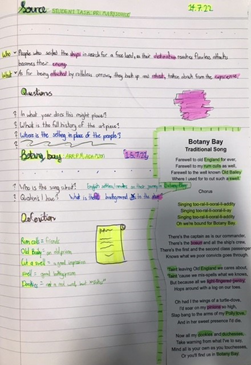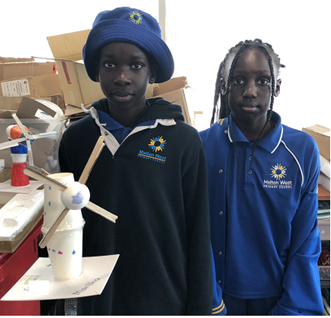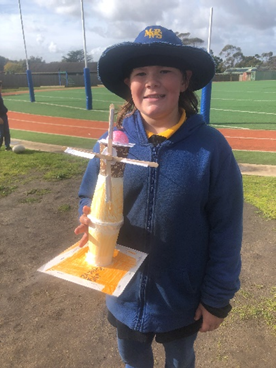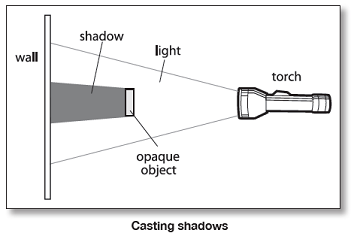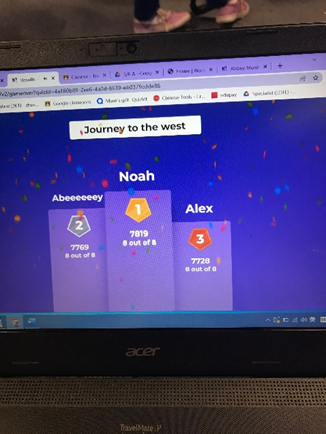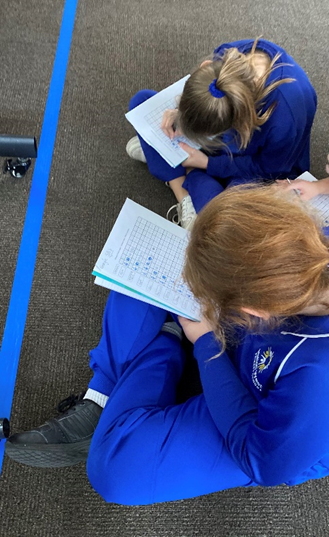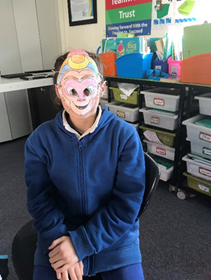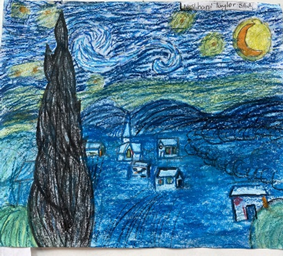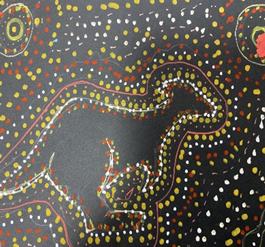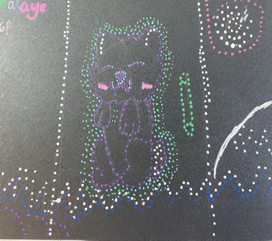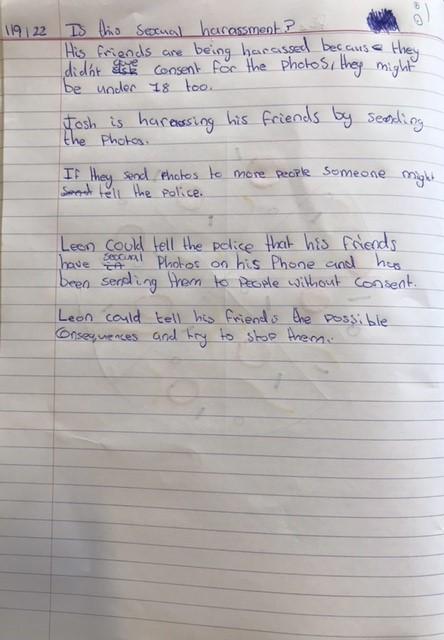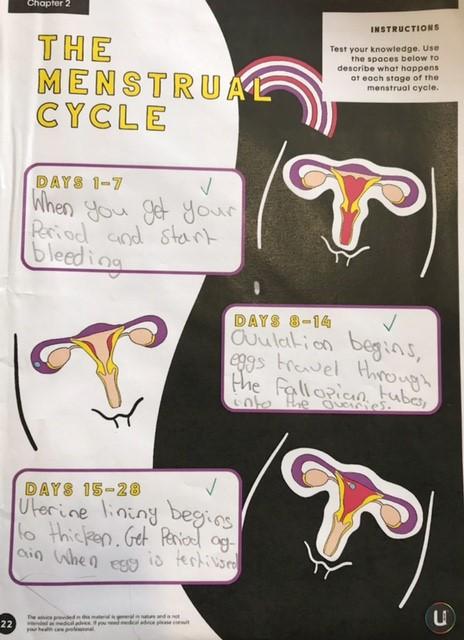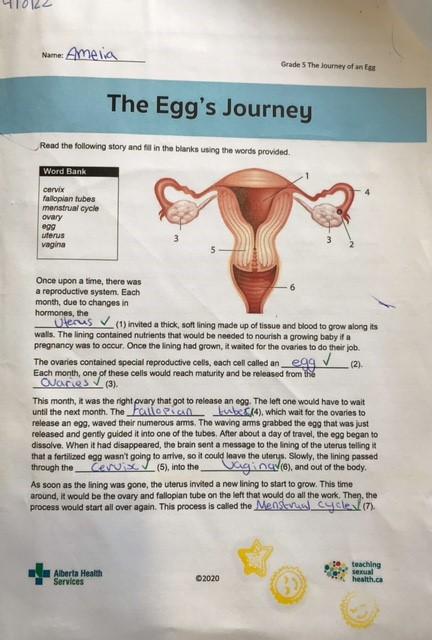Year 5/6
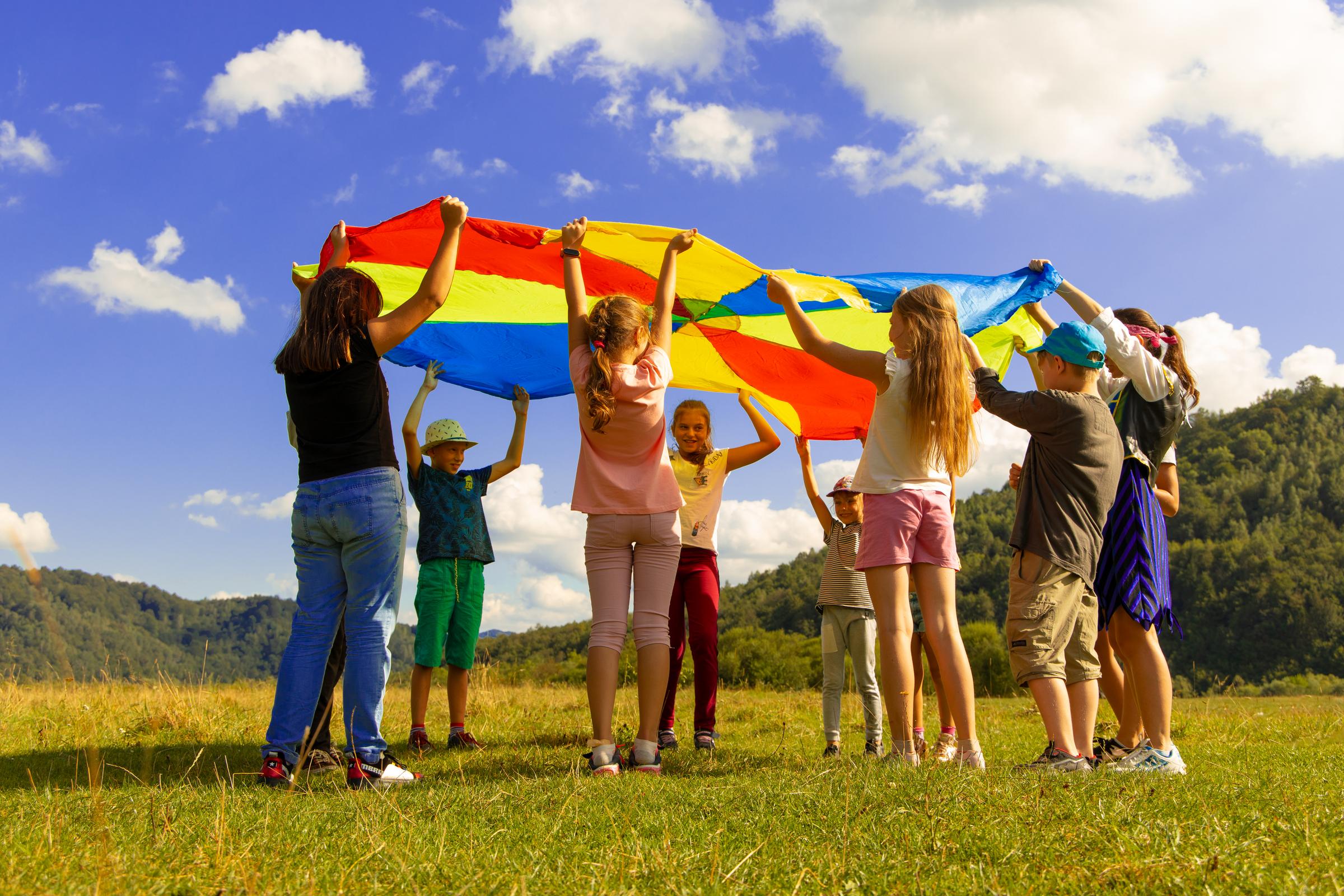
English
Reading
During Reading this term, the Grade 5/6 students have been working on Questioning with a range of quality fiction and non-fiction texts. Throughout the term, the students have learned how to ask thin and thick questions before, during and after reading.
This was to prompt deeper thinking, response and also allow students to clarify meaning. While focusing on particular mentor texts, the students also worked on Synthesising, by determining the difference between what they know before reading and how their thinking has changed after reading a text.
The students also had a continual focus on unpacking different text structures and features of the texts they were exposed to.
Writing
During Writing this term, the Grade 5/6 students were able to learn how to write quality narrative texts. The students were taught and then asked to follow the writing process to be immersed in a range of narratives, before working collaboratively with their teacher to unpack a range of narratives, their structure and features.
The students then worked with their teacher to plan, draft and construct a quality narrative which included the use of language features, such as vivid vocabulary (powerful adjectives and verbs), dialogue and figurative language (similes and metaphors). In the last part of the term, the students began working on writing and analysing poetry. They constructed a poetry anthology which is a collection of multiple different types of poems. They have further developed an understanding of how an array of poetic devices are used and the purpose of these devices.
Mathematics
In Mathematics, the 5/6 students began this term by learning about fractions. They applied their prior knowledge in modelling fractions by using concrete materials and diagrams e.g. making fractions by folding papers and creating a fraction wall. They developed their understanding of equivalent fractions using fraction walls i.e. 1/2 is equivalent to 2/4 and 2/4 is equivalent to 4/8. We focused a lot on mathematical vocabulary this term where we learnt through modelling unit fractions (one-eighth, one-fifth etc.), proper fractions (numerator is smaller than denominator e.g. 3/4), improper fractions (numerator is bigger than denominator e.g. 5/3 ), mixed numbers (wholes and part written together e.g. 1 whole and 2/3 ), like fractions (denominators of different fractions are the same e.g. 1/4 and 6/4) and unlike fractions (denominators of two or more fractions are different e.g. 1/3 and 2/4). Our students learnt how to convert mixed numbers into improper fractions and vice-a-versa e.g. 5/3 is 1 whole and 2/3. We developed our understanding of adding and subtracting like and unlike fractions using different mediums like concrete materials, diagrams/pictures, number lines and bar models. We learnt the butterfly method to solve addition and subtraction equations involving fractions. To conclude our knowledge of fractions we applied our understanding into real life problems where addition, subtraction, multiplication and division were involved.
Our students expanded their understanding of fractions to decimals and percentages by learning the relationship between the three using place value and demonstrating their understanding by converting common fractions into decimals and percentages and vice-a versa. They applied this knowledge within the context of probability experiments and investigations, such as assigning fractional or decimal values to the outcome of an event occurring.
Later in this term, our learners progressed to learning about financial mathematics, including simple budgets and calculating discounts using percentages. We concluded this term by learning about statistics and data where students learnt to analyse types of data (categorical and numerical) and their sources and demonstrated an understanding of data representation.
Inquiry
During Inquiry this term, the Grade 5/6 students explored the Inquiry topic ‘Bound for Botany Bay’. Together we delved into the significant events and people that have impacted on the early development of Australia.
The students investigated the people who came to Australia and the reasons why they came e.g. Eugene von Guerard who immigrated to Australia from Austria during the Gold Rush. Students also investigated the way Australian colonies developed and how significant people like James Macquarie shaped Australian colonies.
The 5/6 students learned to look at primary and secondary sources through a historical bias lens and explored the contribution significant individuals, such as Caroline Chisholm, George Barrington, Truganini, William Buckley, Esther Abrahams and Bennelong, made to the development of Australian society
The students also explored the themes of the city of Melbourne through a project conducted in class and an excursion to the city. The students explored the following themes and how they made Melbourne the city it is today - transport, indigenous culture, John Fawkner, John Batman, immigration and multiculturalism, water and the Yan Yean System, The Enterprize and the City of Melbourne Coat of Arms.
Science
Grade 5/6 students have really enjoyed the activities in Engineering and Science this term. Students finished off their miniature windmills and tested them using a hairdryer. It was quite amazing to see some work so well that they nearly self-destructed!
They then moved onto Physics and investigated light using equipment such as torches and light boxes, completing experiments with different materials to see how much light they let through. They categorised them as opaque, translucent or transparent.
As Term 3 is drawing to a close, I hope students enjoyed STEM and are looking forward to even more experiments with Chemistry.
LOTE – Chinese
During Term 3 in Chinese, Grade 5/6s learned sport topics and the story of Journey to the West. They learnt a traditional Chinese sport, Ba Duan Jing, on a weekly basis which means they learnt one form each week. This sport included 8 forms of exercises to build up physical health and fitness for the human body. Students also practised character writing and oral pronunciation for sport.
For the story Journey to the West, students learnt about Monkey King and his birth place, his skills, and his personality. Grade 5/6s also learnt how Monkey King, Pigsy, Sandy and Master Xuanzang went to India for holy books. They enjoyed colouring Monkey King’s face mask and learnt key words from the story. Students also enjoyed online games such as Kahootz and Quizlet Live, based on this story. Well done on a great Term 3 Grade 5/6s!
Art
The grade 5/6 students have been experimenting with lines and drawing this term, and have demonstrated how lines can create expression and mood in artworks. A line can express various design elements, such as delicacy or force, curved lines may show a swirling sky, or turn sharply, twisting our minds as they demonstrate movement throughout artworks. In lieu of this, the 5/6 students have been working very hard on their ‘Starry Night’ Van Gogh artworks and have replicated the heavy paint strokes, turbulent windy night skies and landscapes, using crayon and oil pastels.
The students have shown a huge level of resilience during this task, to achieve the thick and dynamic ‘paint’ effect used by the artist. In addition to Van Gogh, the 5/6 students have been learning about Aboriginal Art and NAIDOC week.
They have had wonderful lessons with Aboriginal artist Lucy Webster, learning about Aboriginal culture and in particular, line and dot art techniques and their origin. We are currently still working on the Aboriginal Art theme and the students are exploring different techniques to inspire their designs.
It has been a fun and creative time with the Grade 5/6 students, and I am so proud of their hard work this term.
P.E.
This was again a busy term for the Grade 5/6 students with the interschool netball divisional round and basketball taking place. The students who represented the school at these events did a fabulous job and did their school proud. A special mention to the girls netball team who made it through to the divisional round. Well done girls and congratulations on your effort! Congratulations and well done to all those students and teachers involved for this term!
For Term 3, students began with AFL football. The students took a skills-based focus first, followed by a games-based approach. Students first worked on the relevant skills for football and showcased these in activities with their peers. These included kicking, handballing and marking. Once completed, the students then played modified games of football. The aim of this was to get students to understand rules and think about strategies to solve problems during these games. During this, we also incorporated some tackling and the skills of performing this safely and responsibly. After completing this unit, students in Grade 5/6 focused on soccer and the skills required to play the sport.
Students were tested on their vocabulary for this sport and their ability to perform the relevant skills needed to play. We once again took a games-based approach and all students participated in games to showcase not only the skills but also strategy, rule knowledge, and tactics to win games of soccer. This term was so much fun, with plenty of opportunities for the 5/6 students in interschool sports. We are seeing some success at interschool sport level which I am excited to build on for Term 4.
I am looking forward to many more sports in Term 4 and to keep working with each student to develop their skills in Physical Education.
Sexual Education
During Sexual Education this term, the Grade 5/6 students explored the idea of learning in the uncomfortable. Together we created guidelines for the class to follow to ensure that students had the chance to ask questions without fear of judgement and to learn the language of sexual health. It was the aim of this unit to investigate the changes and transitions associated with puberty, investigate resources and strategies that students can use to seek help about health, safety and wellbeing and to plan and practise strategies to promote these.
The students have learnt about the physical and social/emotional changes that may arise as a result of going through puberty. They have also learnt about the different stages of the menstruation cycle, with students in Grade 5/6 who have or will experience menstruation being given packs from U by Kotex.
Through the next stage of the unit the students then learnt about the journey of the egg and the sperm and how that leads to conception.
During the last stage of the unit, students learnt about consent and the difference between informed, implied and explicit consent. They then explored the definitions of sexual harassment and sexual assault and the laws and policies Australia has in place and the actions and strategies they can put in place to assert standards and boundaries or to seek help.
